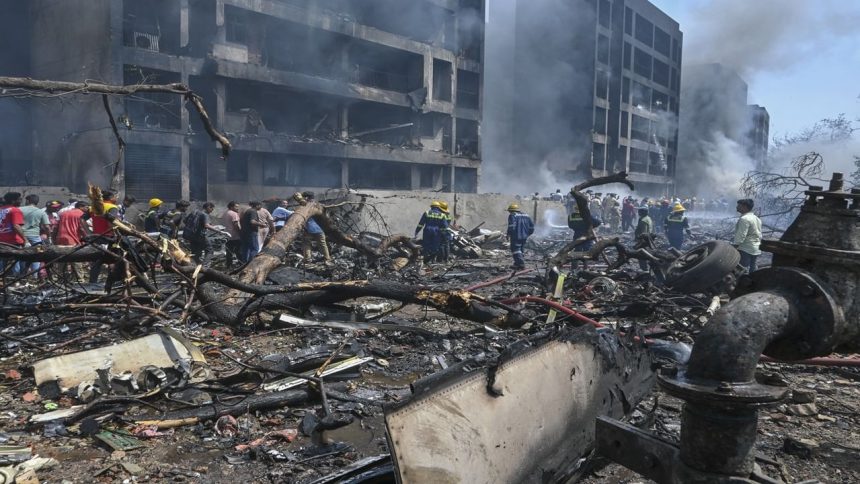New Delhi: The Air India AI-171 crash in Ahmedabad has resulted in a tragic loss of life, and the community is grappling with grief and the complex process of identification and recovery. On the third day following the incident, the site of the crash presents a stark contrast to the previous day’s intense activity. While the immediate emergency response has concluded, investigators from the Directorate General of Civil Aviation (DGCA) and other agencies remain on-site, meticulously examining the wreckage and gathering evidence to determine the cause of the accident.
The scene, initially marked by chaos and emergency personnel from agencies including the Gujarat Police, NDRF, SDRF, and CISF, has now settled into a quieter, more methodical investigation. However, NDRF teams are scheduled to return later in the day for a final sweep of the area, ensuring no trace of evidence remains overlooked.
Meanwhile, at the civil hospital in Ahmedabad, a heartbreaking scene unfolds. Relatives of the victims, many having travelled from far distances, wait anxiously for the release of their loved ones’ remains. The process of DNA sampling, initiated yesterday, continues at Kasauti Bhavan. This painstaking process, involving the collection of samples from both the recovered bodies and the victims’ relatives, is essential for the accurate identification of all those who perished in the crash. The delays in releasing the bodies, even though the DNA sampling is expected to be concluded shortly, underscore the meticulousness required to ensure accurate identification and the emotional toll this takes on the bereaved.
One family from Mumbai is reported to be among those mourning the loss of four family members. The hope is for the swift completion of the DNA matching process, allowing for the dignified return of the victims’ remains to their families. The incident underscores the devastating impact of air accidents and the critical importance of thorough investigation and ongoing support for the bereaved in the aftermath.










